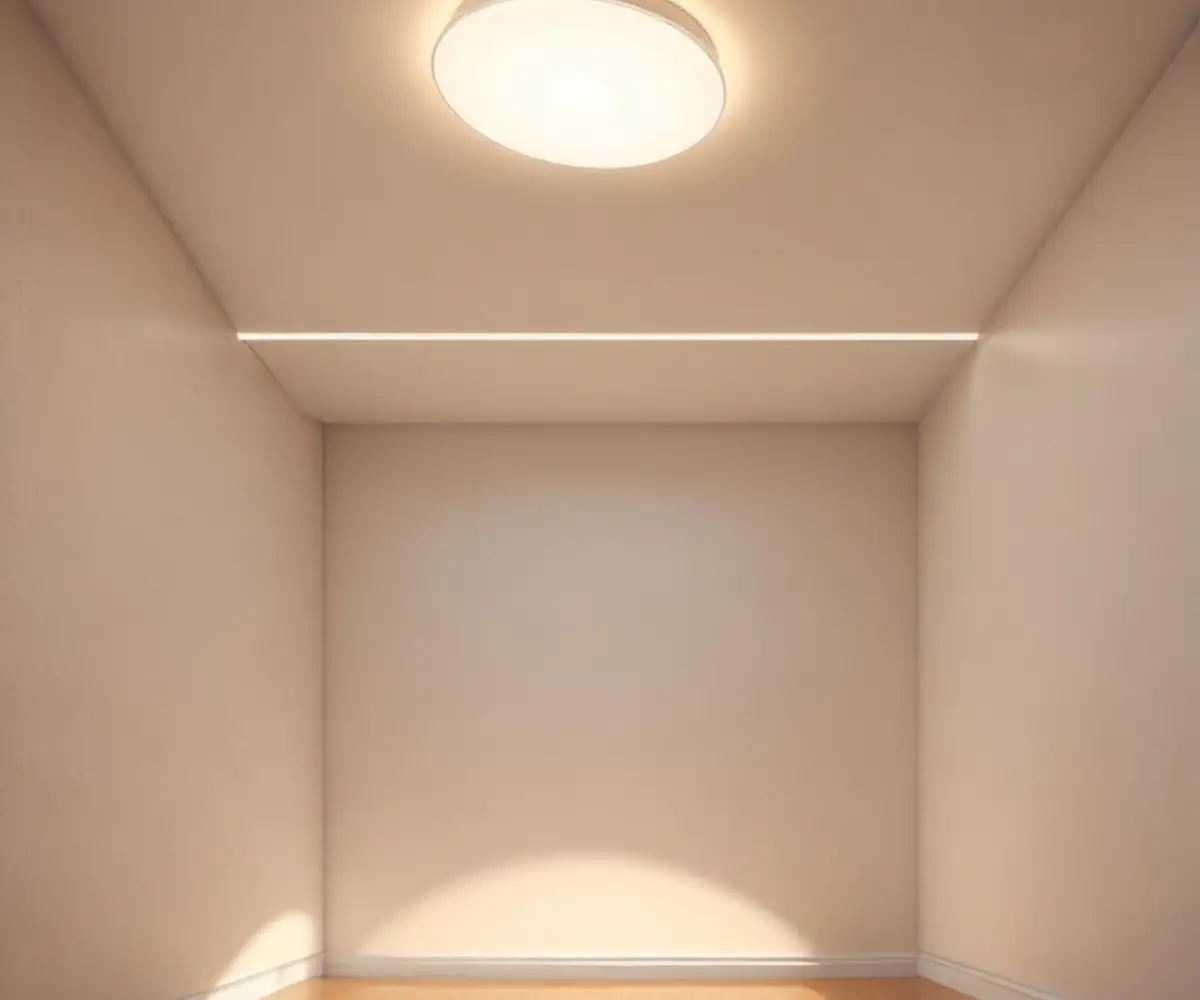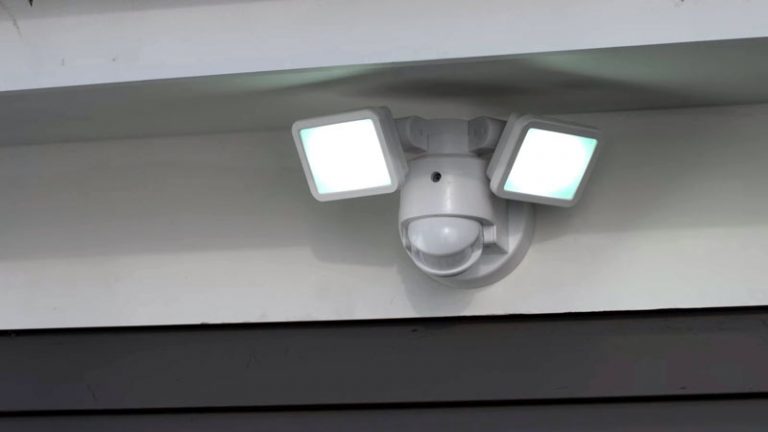Wafer Lighting vs Recessed: The Ultimate Showdown for 2025
Choosing the right ceiling lighting feels like a high-stakes decision for any homeowner or builder. Make the right choice, and your space is bathed in beautiful, functional light. Make the wrong one, and you’re left with awkward shadows, high energy bills, and the nagging feeling that something just isn’t right. This decision often comes down to two popular contenders: modern LED wafer lights and traditional recessed can lights.
The core of the problem is a lack of clear information. One promises sleek, modern simplicity, while the other offers classic reliability. Understanding the fundamental differences in how they are installed, how they perform, and what they cost over their lifetime is the key to avoiding a costly and frustrating mistake. This guide will illuminate the path forward, ensuring your ceiling is a source of pride, not problems.
You'll Learn About
The Core Dilemma: What’s Really Under Your Ceiling?
At a glance, both lighting types aim for a clean, integrated look. However, their design and construction are worlds apart, dictating everything from installation complexity to long-term maintenance. Wafer lights are a newer technology, while recessed cans have been a staple for decades.
Grasping these foundational differences is the first step in making a confident and informed choice for your specific project. Each has distinct advantages that shine in different scenarios.

Understanding Wafer Lights: The Modern, Slim Solution
Wafer lights, also known as canless or ultra-slim LEDs, are a marvel of modern engineering. They consist of a very thin LED panel (often less than an inch thick) connected to a separate driver or junction box. This two-part system is their secret weapon.
Because there is no bulky “can” or housing, wafer lights can be installed in places traditional lights could never go. They are perfect for ceilings with minimal clearance, such as those with obstructive joists, pipes, or ductwork just above the drywall.
Understanding Traditional Recessed Lights: The Classic Can
Traditional recessed lighting is a two-part system comprised of a housing (the “can”) and a trim kit with a bulb. The can is a metal cylinder that gets installed into the ceiling cavity, containing all the wiring and the socket for the bulb.
This design has been a trusted lighting solution for years, offering immense versatility. The separation of the housing from the bulb and trim allows for a wide range of customization, from the type of bulb used to the style of the visible trim.
Installation Showdown: Where the Real Battle is Won
The most significant divergence between these two lighting types is the installation process. This is often the deciding factor for remodel projects versus new construction and can have a major impact on labor costs and project timelines.
Wafer lights were born out of a need for simplicity and flexibility in existing homes. Traditional cans, especially new-construction models, are designed to be installed when the ceiling joists are still exposed, making them a more involved choice for retrofitting.
Wafer Light Installation: The Promise of Simplicity
Installing a wafer light is remarkably straightforward. You simply cut a hole in the drywall, connect the wiring in the remote junction box, place the box into the ceiling, and snap the light fixture into the hole with its spring-loaded clips. This simplicity makes them a DIY-friendly option and a favorite for electricians working on remodels.
Their canless design means you don’t have to worry about perfectly aligning the fixture with ceiling joists. This freedom of placement is a massive advantage in rooms with complex ceiling structures.
Recessed Can Installation: The Structural Challenge
Installing a traditional recessed can is a more invasive process, especially in an existing ceiling. It requires a larger hole and enough vertical clearance (often six inches or more) to fit the housing. The location may be dictated by the placement of ceiling joists.
For remodel projects, securing the housing can sometimes be tricky. This is a situation where knowing simple homeowner skills, like understanding how to deal with screw anchors, can come in handy for various home improvement tasks. New-construction cans are nailed directly to joists before the drywall goes up, making for a much more stable installation.
Aesthetics and Design: Crafting Your Ceiling’s Look
Beyond the practicalities of installation, the final look is what you’ll live with every day. Both wafer and recessed lights can achieve a clean, modern aesthetic, but they offer different levels of design flexibility and create different visual effects.
The choice here often comes down to personal preference: do you want a light that is almost invisible, or one that offers more opportunities for customization and directional control?
The Minimalist Appeal of Wafer Lights
Wafer lights offer the ultimate minimalist look. Because the light panel sits completely flush with the ceiling, they create a seamless, uninterrupted surface. This clean appearance is highly sought after in contemporary and modern design schemes.
The trade-off for this sleekness is a lack of variety. The trim is integrated into the light, and there are very few options for adjusting the direction of the light. What you see is essentially what you get.
The Versatility of Traditional Recessed Trims
This is where traditional recessed lighting truly excels. The housing is separate from the trim, opening up a world of possibilities. You can choose from various trim styles like baffle, reflector, gimbal (for adjustable, directional light), or even decorative trims.
This flexibility allows you to tailor the lighting to specific needs, such as highlighting artwork with a gimbal trim or reducing glare with a deep baffle trim. You can also change the trim in the future without replacing the entire fixture if your design tastes evolve.
Cost and Longevity: A Surprising Twist
When comparing costs, it’s crucial to look beyond the initial price tag on the box. The true cost of a lighting system includes the fixture, installation labor, energy consumption, and long-term maintenance. Here, the winner isn’t always as clear-cut as it seems.
Wafer lights often have a lower upfront cost per fixture, but traditional cans can offer surprising long-term value, particularly when it comes to serviceability.
The Hidden Costs of Failure: A Factor Few Consider
Herein lies the single most important, and often overlooked, difference. When a traditional recessed light burns out, you replace the bulb. When an integrated LED wafer light fails, you must replace the entire fixture. While LEDs have an incredibly long lifespan (often rated for 30,000-50,000 hours), they do eventually fail.
Imagine one of your ten kitchen wafer lights fails five years after installation. Finding an exact replacement that matches the color temperature and brightness of the others can be difficult, as models are frequently discontinued. With a traditional can, you simply buy a new bulb, ensuring perfect consistency.
| Feature | Wafer Lighting (Canless) | Traditional Recessed Lighting (Can) |
|---|---|---|
| Installation | Simple, fast, and DIY-friendly. Ideal for remodels. | More complex and invasive. Best for new construction. |
| Ceiling Clearance | Minimal clearance needed (often under 2 inches). | Significant clearance required for housing (6+ inches). |
| Upfront Cost | Generally lower per fixture. | Higher per fixture (housing + trim + bulb). |
| Serviceability | Entire fixture must be replaced upon failure. | Only the bulb needs to be replaced. |
| Aesthetics | Ultra-minimalist, flush-mount look. | Clean, but with a visible, inset trim. |
| Versatility | Limited options for trim or directional light. | Highly versatile with many trim and bulb options. |
| Energy Efficiency | Excellent, as they are inherently LED. | Excellent when paired with an LED bulb. |
Performance and Light Quality: Beyond Just Brightness
Not all light is created equal. The quality of the light in your home affects everything from the ambiance of a room to how colors appear on your walls and furniture. This is an area where making a thoughtful choice pays dividends in daily comfort and satisfaction.
Important factors like the Color Rendering Index (CRI), air leakage, and insulation compatibility should be weighed just as heavily as brightness or cost.
The Truth About Light Quality (CRI)
The Color Rendering Index (CRI) is a scale from 0 to 100 that measures how accurately a light source reveals the true colors of objects. For a home, you want a CRI of 90 or higher. High-CRI light makes food look more appetizing, furniture more vibrant, and even people look healthier.
With traditional cans, you have the freedom to choose any bulb, allowing you to select one with a very high CRI. This is crucial for spaces like kitchens where color accuracy matters, ensuring you can appreciate the true beauty of your design choices, like how light plays on your countertops. Getting those surfaces perfect is a priority, just as knowing how to remove scuff marks from quartz countertops keeps them looking pristine.
Air Leakage and Insulation: The Unseen Energy Drain
An often-neglected aspect of ceiling lighting is its impact on your home’s energy efficiency. Older recessed cans could be a major source of air leakage into your attic, wasting heated and cooled air. Modern cans address this with an “IC” rating, which means they are safe for direct contact with insulation and are typically more airtight.
Wafer lights, by their very nature, create a smaller penetration in the ceiling and are almost always IC-rated. Their slim design and tight fit make them an excellent choice for maintaining the thermal barrier of your ceiling, potentially saving you money on energy bills over the long run.
The Final Verdict: Which Lighting is Right for You?
The choice between wafer lighting and traditional recessed lighting isn’t about which is “better,” but which is better for your specific project. By weighing the pros and cons against your needs, budget, and design goals, you can arrive at the perfect solution.
Let’s break it down into simple, actionable recommendations based on common scenarios.
Choose Wafer Lighting If…
You are remodeling an existing space, especially one with ceiling obstructions or low clearance. Their ease of installation will save you significant time and money on labor. They are also the clear winner if you prioritize a perfectly seamless, minimalist aesthetic above all else.
Choose Traditional Recessed Lighting If…
You are building a new home where installing housings is simple. Choose them if you value long-term serviceability and the ability to easily replace a bulb. They are also the superior choice if you need specialty lighting, like adjustable gimbals to highlight specific features in a room.
A Note on Maintenance and Troubleshooting
No matter which fixture you choose, proper installation and maintenance are key to longevity. A loose connection or a faulty driver can cause issues down the line. For any electrical work, having the right tools on hand is non-negotiable. A project can grind to a halt without reliable power, which is why understanding the basics of tool maintenance, even something as simple as why a DeWalt 20v battery won’t charge, is part of being a prepared homeowner.
Ultimately, both wafer and recessed lights are excellent technologies that can beautifully illuminate your home. By understanding their core differences in installation, serviceability, and design, you can make a choice that you’ll be happy with for years to come.

